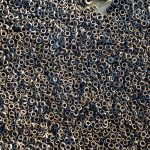When it comes to ensuring the health and happiness of your pet tortoise, one thing you must not overlook is the sunlight exposure. Sunlight is vital for the well-being of tortoises, playing a critical role in their bone structure and metabolism. However, if you’re keeping your tortoise primarily indoors, providing adequate sunlight can become a bit of a challenge. Don’t worry, though – this guide will walk you through the process of creating the perfect sunlight-infused habitat for your shelled friend, touching on everything from temperature control to UVB light provision.
Choosing the Perfect Enclosure
Before we delve into the specifics of heat and light management, let’s start by discussing the enclosure itself. The size, shape, and materials used for the enclosure can significantly influence the amount of sunlight your tortoise is able to absorb.
Sujet a lire : What’s the Best Strategy for Easing a Toy Poodle into a New Home with Elderly Residents?
Your tortoise’s enclosure should provide ample space for your tortoise to roam, burrow, and hide. Remember, too small an enclosure can lead to stress and destructive behavior. Also, the cage’s design should facilitate easy light and heat management. An open or mesh-topped habitat can allow natural sunlight to filter in, while also letting out any excess heat.
While glass enclosures can look sleek and modern, they do pose a challenge when it comes to temperature control. Glass can amplify the sun’s rays, potentially creating an unhealthy heat situation for your pet. Therefore, carefully consider the materials used and ensure they are safe and suitable for your specific tortoise species.
Lire également : What Are the Best Tips for Hand-Rearing Orphaned Wild Hedgehogs?
Temperature and Heat Management
Proper heat management goes hand-in-hand with providing adequate sunlight. Most tortoise species are native to warm, sunny climates, so they’re biologically wired to thrive in heated environments. Therefore, it’s crucial that you maintain the enclosure’s temperature in a suitable range for your specific tortoise species.
The ideal temperature can vary depending on the species, but generally, the enclosure should maintain a gradient from around 75 degrees Fahrenheit to 95 degrees Fahrenheit. This allows your tortoise the freedom to move to cooler or warmer areas as needed.
A heat bulb can help in maintaining a consistent temperature. Position the bulb over the basking area but also ensure there are cooler areas in the enclosure. Do remember to keep the heat bulb out of the tortoise’s reach to prevent accidents.
The Necessity of UVB Light
In their natural habitats, tortoises bask in the sun to absorb vital UVB rays. These rays stimulate the production of Vitamin D3, which in turn aids in the absorption of calcium, a vital nutrient for healthy shell and bone growth. However, indoor settings often lack this crucial element.
To bring the benefits of UVB to your tortoise’s indoor habitat, consider investing in a UVB bulb. These special bulbs emit UVB radiation, providing your pet with a synthetic source of sunlight. They come in various forms including tubes, compact bulbs, and even combination bulbs that provide both UVB and heat.
Water and Diet: Other Essential Elements of Care
While this article focuses on sunlight and heat, it’s important to remember that these are just parts of your tortoise’s care. Proper hydration and diet are equally crucial to your tortoise’s health.
Provide a shallow water dish in the enclosure for your pet to drink from and bathe in. You should also regularly mist the enclosure to help maintain a humid environment, particularly important for tropical tortoise species.
In terms of diet, offer a variety of fresh, leafy greens, vegetables, and fruits. Some tortoises also require a small amount of animal protein. Supplement their diet with a reptile calcium and multi-vitamin powder, especially if you’re still working on the UVB lighting setup.
Essential Tips for Baby Tortoise Care
Caring for a baby tortoise requires some extra attention and care. While the fundamental elements remain the same – heat, light, water, and diet – baby tortoises are more sensitive to their environment.
Temperature gradients should be maintained as with adult tortoises, but the cool end of the gradient should be slightly warmer for babies. Also, UVB light is crucial for baby tortoises as they are in the rapid growth phase and need plenty of calcium for their developing shells.
Baby tortoises also need a substrate that retains moisture well to help maintain a humid environment. Coir or a coco-fiber substrate can work well.
Remember, every tortoise is unique, and what works well for one might not work for another. The main thing is to observe your pet and adapt the care to its needs and behavior. With proper care and attention, you’ll have a healthy, happy tortoise to share your life with.
Creating a Naturalistic Tortoise Table
A tortoise table serves as a makeshift ecosystem that mimics your pet’s natural habitat. This essential feature goes a long way in ensuring your tortoise’s physical and mental health. The more natural the setting, the more comfortable your tortoise will be, and the more likely it is to exhibit normal behaviors like basking and burrowing.
A tortoise table should have a gradient of temperature and light, just like the environment of a tortoise in the wild. Therefore, one end of the table should have a heat source, like a heat lamp, and be well-lit, while the other end should be cooler and dimmer. This arrangement allows your tortoise to thermoregulate by moving between different temperature zones as it wishes.
The tortoise table should also have hiding spots, such as logs or caves. These offer a sense of security, particularly for shy or stressed tortoises. A tortoise that feels safe is a happy tortoise. Additionally, consider incorporating climbing elements, like rocks or branches, for physical stimulation.
Substrate selection is crucial in a tortoise table. Substrate helps maintain humidity, provides a medium for burrowing, and adds to the overall aesthetic of the environment. Use a natural substrate like coconut coir or fine-grade orchid bark for tropical tortoises, and dry substrates like hay or aspen shavings for desert species like Russian tortoises.
Regular Health Check-ups: A Must for Pet Tortoises
Just as sunlight exposure and diet are vital for your tortoise’s health, so are regular health check-ups. A professional vet who specializes in reptiles can detect any health issues early and provide timely treatment.
Watch for signs of ill health, such as a change in appetite, lethargy, a runny nose, or soft and discolored tortoise shell. Also, monitor your tortoise’s weight regularly. Weight loss can be an early sign of illness in tortoises. If you notice any unusual symptoms, don’t hesitate to consult a vet.
Regular fecal checks can also help detect any internal parasites. Parasites can be common in tortoises, especially those sourced from the wild. A vet can provide appropriate medication to treat such conditions.
Conclusion
Caring for a pet tortoise, whether it’s a baby tortoise or an adult, can seem daunting due to their specific needs. However, with the right information and preparation, you can create an indoor environment that closely mimics their natural habitat. From setting up the perfect tortoise enclosure and maintaining ideal temperature gradients, to ensuring proper sunlight exposure through a UVB light and maintaining a balanced tortoise diet, every step is crucial in promoting a healthy and happy life for your tortoise.
Remember, understanding the needs of your specific tortoise species is key. And as always, regular health check-ups can help detect any issues early on. With the right care, your tortoise can live a long, healthy life, providing you with an enriching and rewarding pet ownership experience.






